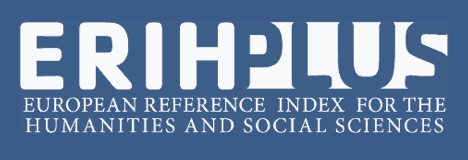(Web) cartography and augmented reality: new ways to use digital technologies in teaching geography
Abstract
The use of digital technologies, especially in education, can produce more attractive classes and directly influence the cognitive development and wellbeing in school environment. Electronic equipment connected to the internet has become essential to most of the population. Smartphones, in particular, are nowadays the most popular gadget in the world. In this sense, some possible didactic interventions for teaching were outlined here, especially to geography, using digital and virtual technologies based in the context of WEB 2.0 and WEB 3.0, which can be accessed by these devices. This paper focused on (WEB) cartography, augmented reality (AR), and the (GEO) entertainment, applied to Google Earth, Google Street View, applications for RA and online games.
References
CARDOSO, Raul G. S.; et al. Uso da realidade aumentada em auxilio a educação. Computer on the Beach. 2014. Disponível em
CARVALHO, C. V. A.; LEMOS, B. M. Material Dourado RA - Um software para o ensino-aprendizagem do sistema de numeração decimal-posicional através da Realidade Aumentada. Journal Virtual Reality, Rio de Janeiro, v. 4, n. 1, p.56-70, jul. 2011. Disponível em
CHAVES, E, O. C. Tecnologia na Educação. 2004. Disponível em http://smeduquedecaxias.rj.gov.br/nead/Biblioteca/Forma%C3%A7%C3%A3o%20Continuada/Tecnologia/chaves-tecnologia.pdf > Acesso em 06 dez. 2017.
KIRNER, C.; KIRNER, T. G. Evolução e Tendências da Realidade Virtual e da Realidade Aumentada. In: SYMPOSIUM ON VIRTUAL REALITY AND AUGMENTED REALITY, 13., 2011, Uberlândia-MG. Realidade Virtual e Aumentada: Aplicações e Tendências. Uberlândia, MG: SBC, 2011. cap. 01, p. 10 - 25.
KISHIMOTO, Tizuko M. Jogos, brinquedo, brincadeira e a educação. Org: 3. ed. São Paulo: Cortez, 1999.
LEAL, J. Redes Sociais na Sala de Aula. Tecnologias da Informação em Educação. Universidade de Aveiro. Indagatio Didactica, v.3, p. 30-143, 2011.
MEDEIROS. G. Web 2.0 e suas potencialidades educacionais. Disponível em
MENEGUETTE, A. A. C.. Cartografia na Web conceitos e definições. 2013. Disponível em:
MORI. K. G. Tecnologias e currículo para uma educação de qualidade. Redes de aprendizagem, tecnologia e qualidade da educação, 2012. Edição Especial, p. 3-9, junho. Disponível em Acesso em 16. ago. 2017.
PRENSKY, M. Digital Natives, Digital Immigrants Part 1. On the Horizon . Vol 9, nº
5. Setembro/Outubro, 2001.
SASSAKI. C. Educação 3.0: conheça um novo modelo de ensino.2017. Disponível em
REDAÇÃO ADNEWS. Pesquisa da ESPM traça perfil dos gamers no Brasil. 2016. Disponível em: < http://adnews.com.br/tecnologia/pesquisa-da-espm-traca-perfil-dos-gamers-no-brasil.html> Acesso em: 03 dez. 2017.
ROBERTO, R. Desenvolvimento de Sistema de Realidade Aumentada Projetiva com Aplicação em Educação. 2012. 53 f. Dissertação (Mestrado) - Curso de Ciência da Computação, Universidade Federal de Pernambuco, Recife, 2012. Disponível em http://repositorio.ufpe.br/handle/123456789/10944 > Acesso em 06 dez. 2017.
ZORZAL, E. R.; Oliveira, M. R.; Silva, L. F.; Cardoso, A.; Kirner, C.; Lamounier Júnior, E. Aplicação de Jogos Educacionais com Realidade Aumentada. RENOTE. Revista Novas Tecnologias na Educação, v. 6, p. 29, 2008.

This work is licensed under a Creative Commons Attribution-NonCommercial 4.0 International License.
Policy Proposal for Free Access Journals
Authors who publish in this journal agree to the following terms:
a. Authors retain the copyright and grant the journal the right of first publication, with the work simultaneously licensed under the Creative Commons Attribution License which allows the sharing of the work with acknowledgment of the authorship of the work and initial publication in this journal.
b. Authors are authorized to take additional contracts separately, for non-exclusive distribution of the version of the work published in this journal (eg publish in institutional repository or as a book chapter), with acknowledgment of authorship and initial publication in this journal.
c. Authors are allowed and encouraged to publish and distribute their work online (eg in institutional repositories or on their personal page) at any point before or during the editorial process, as this can generate productive changes, as well as increase the impact and The citation of published work (See The Effect of Free Access).





















